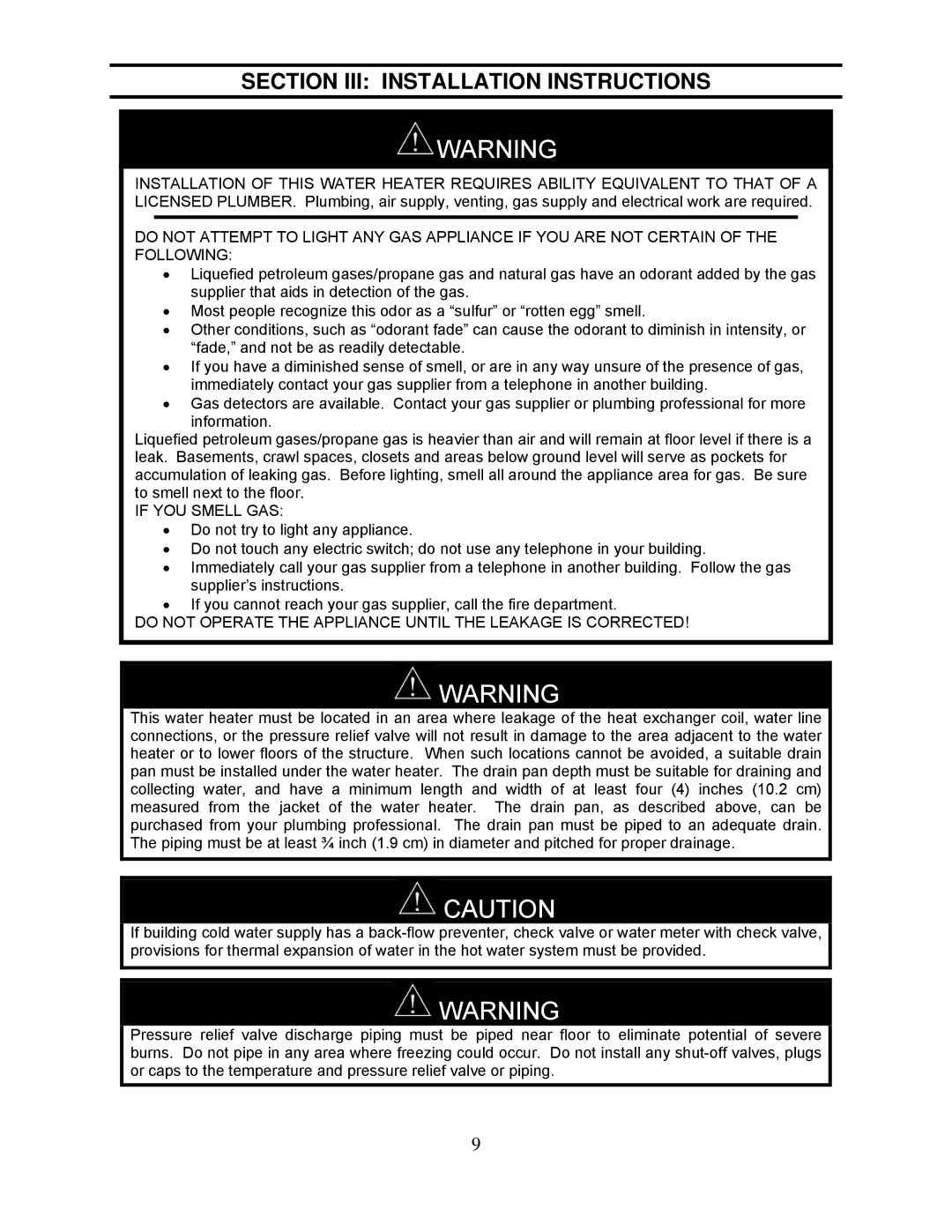
SECTION III: INSTALLATION INSTRUCTIONS
![]() WARNING
WARNING
INSTALLATION OF THIS WATER HEATER REQUIRES ABILITY EQUIVALENT TO THAT OF A LICENSED PLUMBER. Plumbing, air supply, venting, gas supply and electrical work are required.
DO NOT ATTEMPT TO LIGHT ANY GAS APPLIANCE IF YOU ARE NOT CERTAIN OF THE FOLLOWING:
∙Liquefied petroleum gases/propane gas and natural gas have an odorant added by the gas supplier that aids in detection of the gas.
∙Most people recognize this odor as a “sulfur” or “rotten egg” smell.
∙Other conditions, such as “odorant fade” can cause the odorant to diminish in intensity, or “fade,” and not be as readily detectable.
∙If you have a diminished sense of smell, or are in any way unsure of the presence of gas, immediately contact your gas supplier from a telephone in another building.
∙Gas detectors are available. Contact your gas supplier or plumbing professional for more
information.
Liquefied petroleum gases/propane gas is heavier than air and will remain at floor level if there is a leak. Basements, crawl spaces, closets and areas below ground level will serve as pockets for accumulation of leaking gas. Before lighting, smell all around the appliance area for gas. Be sure to smell next to the floor.
IF YOU SMELL GAS:
∙Do not try to light any appliance.
∙Do not touch any electric switch; do not use any telephone in your building.
∙Immediately call your gas supplier from a telephone in another building. Follow the gas supplier’s instructions.
∙If you cannot reach your gas supplier, call the fire department.
DO NOT OPERATE THE APPLIANCE UNTIL THE LEAKAGE IS CORRECTED!
![]() WARNING
WARNING
This water heater must be located in an area where leakage of the heat exchanger coil, water line connections, or the pressure relief valve will not result in damage to the area adjacent to the water heater or to lower floors of the structure. When such locations cannot be avoided, a suitable drain pan must be installed under the water heater. The drain pan depth must be suitable for draining and collecting water, and have a minimum length and width of at least four (4) inches (10.2 cm) measured from the jacket of the water heater. The drain pan, as described above, can be purchased from your plumbing professional. The drain pan must be piped to an adequate drain. The piping must be at least ¾ inch (1.9 cm) in diameter and pitched for proper drainage.
![]() CAUTION
CAUTION
If building cold water supply has a
![]() WARNING
WARNING
Pressure relief valve discharge piping must be piped near floor to eliminate potential of severe burns. Do not pipe in any area where freezing could occur. Do not install any
9
